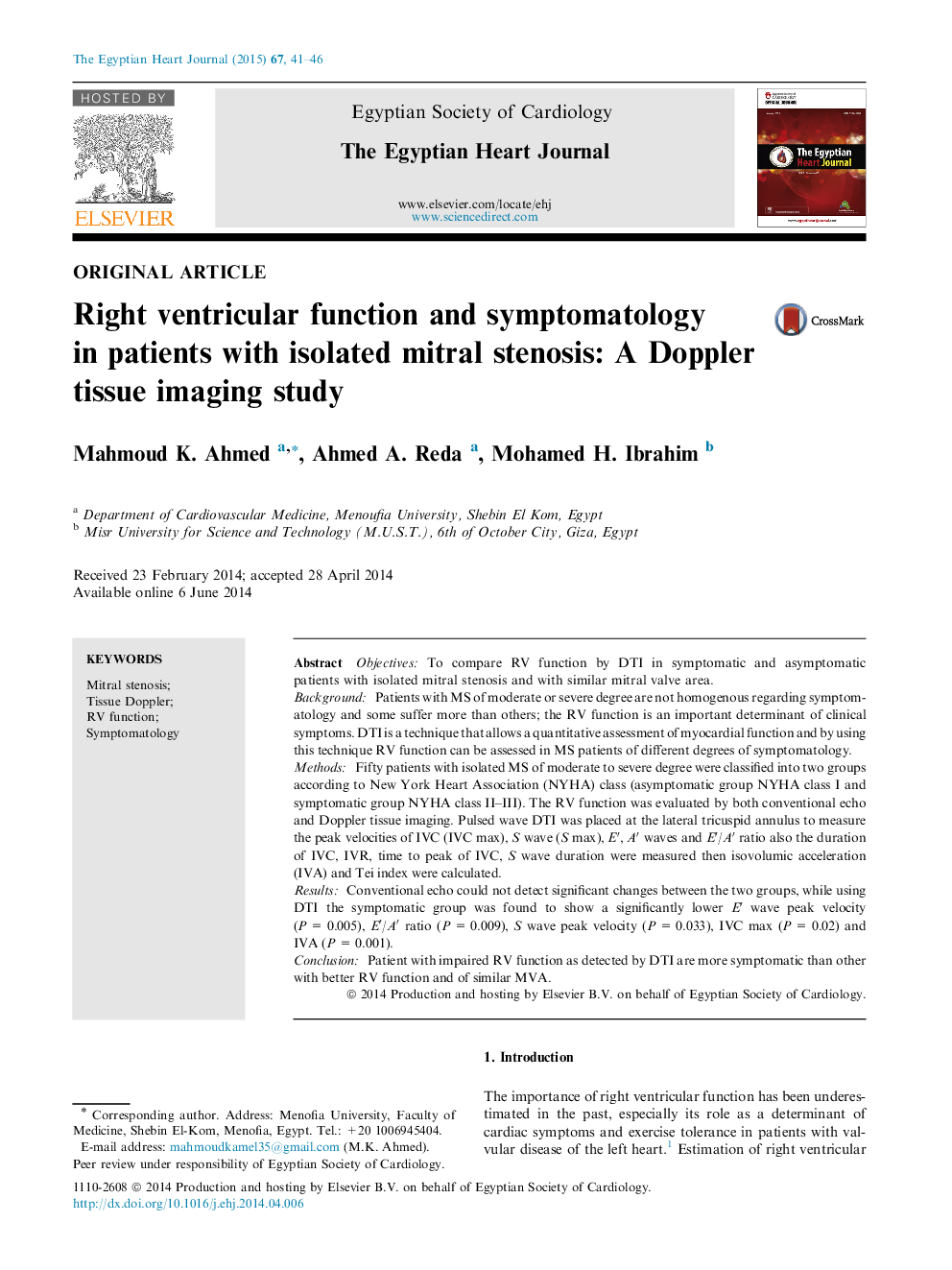| Article ID | Journal | Published Year | Pages | File Type |
|---|---|---|---|---|
| 2910535 | The Egyptian Heart Journal | 2015 | 6 Pages |
ObjectivesTo compare RV function by DTI in symptomatic and asymptomatic patients with isolated mitral stenosis and with similar mitral valve area.BackgroundPatients with MS of moderate or severe degree are not homogenous regarding symptomatology and some suffer more than others; the RV function is an important determinant of clinical symptoms. DTI is a technique that allows a quantitative assessment of myocardial function and by using this technique RV function can be assessed in MS patients of different degrees of symptomatology.MethodsFifty patients with isolated MS of moderate to severe degree were classified into two groups according to New York Heart Association (NYHA) class (asymptomatic group NYHA class I and symptomatic group NYHA class II–III). The RV function was evaluated by both conventional echo and Doppler tissue imaging. Pulsed wave DTI was placed at the lateral tricuspid annulus to measure the peak velocities of IVC (IVC max), S wave (S max), E′, A′ waves and E′/A′ ratio also the duration of IVC, IVR, time to peak of IVC, S wave duration were measured then isovolumic acceleration (IVA) and Tei index were calculated.ResultsConventional echo could not detect significant changes between the two groups, while using DTI the symptomatic group was found to show a significantly lower E′ wave peak velocity (P = 0.005), E′/A′ ratio (P = 0.009), S wave peak velocity (P = 0.033), IVC max (P = 0.02) and IVA (P = 0.001).ConclusionPatient with impaired RV function as detected by DTI are more symptomatic than other with better RV function and of similar MVA.
